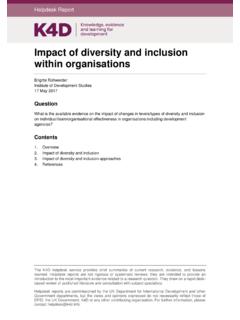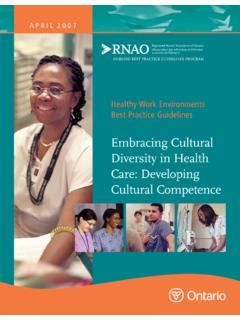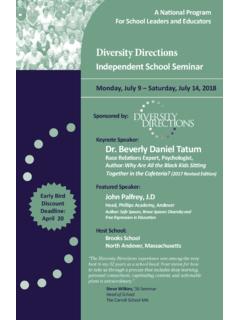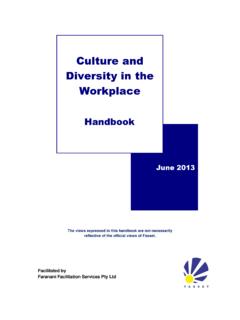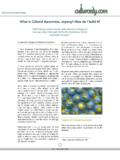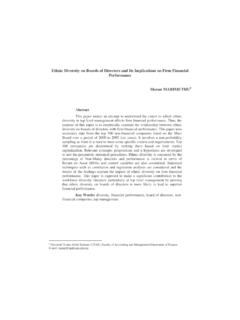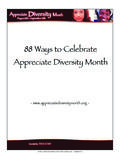Transcription of The multicultural organizations: Perceptions of …
1 Journal of International Business and cultural Studies The multicultural organizations: Perceptions of diversity challenges and initiatives Faridah Awang Eastern Kentucky University Zailani Shafie MARA University of Technology, Malaysia Ryan Pearl Eastern Kentucky University ABSTRACT. This research examined the Perceptions of media relation professionals regarding diversity challenges and initiatives in the workplace. The study focused on the existence of discrimination in the workplace, discrimination against specific groups, initiatives that companies have taken to manage diversity , and actions taken to address minority and diversity issues according to media relations professionals in Fortune 500 companies in the Midwest of the United States. It was concluded that a large group of respondents have observed or perceived discrimination and it is mainly directed to women, employees that are LGBT, and/or minorities. Additionally, most organizations surveyed have taken actions to manage diversity and that companies try to recruit minorities.
2 It is recommended that management commit to diversity programs and implement them in companies experiencing discrimination problems. Training should also be incorporated in educational institutions. Keywords: diversity Initiatives, diversity Management, Organizational Culture, Organizational diversity , Workforce diversity The multicultural organizations: Perceptions INTRODUCTION. Discrimination in the workplace can be detrimental to any organization . The goal of any modern business should be to eliminate all forms of discrimination within their workplace and create an environment that embraces diversity . It is important to understand that discrimination in the workplace is not limited to just a select group of individuals. Discrimination can occur against any person, regardless of their gender, race, religion, culture, or sexual orientation. If discrimination is not countered by education, effective diversity programs, responsible management, and proper company policies, the consequences can be quite severe.
3 Bell, Connerley, and Cocchiara (2009) noted that diversity among applicants, employees, and customers affects every aspect of management, including organizational behavior, human resources, and strategy (p. 597). As will be discussed in further detail later in the analysis, experiences of discrimination are still prevalent within the workplace. As such, diversity management is a critical challenge and the results of discrimination that is left unaddressed can have far reaching implications. However, for those organizations that attempt to meet the challenges of diversity , there can be many tangible benefits such as gaining competitive advantage, reducing turnover and absenteeism. Ultimately, these advantages can create cohesive team environments, as well as reducing personnel costs. Bell et al. (2009) concluded that education would help counteract stereotypes, ignorance of the laws, and ignorance of the potential costs of mismanaging diversity , while increasing understanding of benefits of diversity and inclusion (p.)
4 600). Therefore, effective diversity management can have real and tangible benefits to any organization . In order to better prepare future professionals and managers to tackle the challenges of diversity , research has been conducted to determine not only the existence of discrimination, but also the effectiveness of various company programs to overcome these challenges. Ongoing knowledge regarding diversity initiatives and challenges would lead to better curriculum development, career counseling, and provide students with a direction for proceeding on their career paths. Such knowledge may assist business educators in their selection of course contents, workshops, and seminars to improve their ability in providing relevant education for their students. The results of the study will be useful to determine how diversity was being handled on the job and to ensure future business graduates receive adequate preparation on how to effectively survive in a diverse workplace.
5 Objective The study's objective was to determine the Perceptions of media relation professionals regarding diversity challenges and initiatives in the workplace. Specifically addressed were: (a). existence of discrimination in the workplace of media relation professionals; (b) discrimination against specific groups; (c) initiatives that companies have taken to manage diversity ; and (d). actions companies have taken to address minority and diversity issues. LITERATURE REVIEW. Okoro and Washington (2012) state that given the widespread impact of globalization, workplace diversity in all forms of organizations, including higher education, is now a fact of life and a trend that will continue for a long time. Ignoring the implications of workforce diversity can affect productivity and performance as well as undermine the overall goal of business The multicultural organizations: Perceptions , Page 2. performance. Today's managers are responsible for leading employees and responding to the needs of customers who are more ethnically and culturally diverse, older, and in greater need of child and elder care.
6 Leaders in both the public and the private sectors are focusing more attention on the issue of diversity . Riccucci (as cited in Pitts, Hicklin, Hawes, & Melton, 2010) argued that as the diversity of the US workforce continues to increase at a rapid pace, public managers are facing pressure to create organizational cultures that permit employees from different backgrounds to succeed. The one-size-fits-all approach to management that was effective 30 years ago is arguably no longer an appropriate strategy for ensuring maximum employee performance. diversity management includes acceptance and respect, acknowledging that individuals are unique and different from each other (Lumadi, 2008). Olsen and Martins (2012) further emphasized that the globalization of business and the changing demographics of labor markets around the world have driven much interest in the areas of diversity and diversity management among management scholars and practitioners.
7 While diversity refers to differences among members of a group or organization on any characteristic, most diversity management efforts are focused on diversity in demographic characteristics, such as race, ethnicity, gender, and age (p. 1). Interestingly, a diverse workforce may include a multitude of beliefs, understandings, values, ways of viewing the world, and unique information. Rapid internalization and globalization has increased the significance of workforce diversity . As a result, a cross- cultural and multicultural workforce is now a common thread in corporations globally (Shen, Chanda, D'Netto, & Monga, 2009). Workforce diversity , therefore, has important implications toward management practices and policies. RESEARCH METHODOLOGY. The data for this report were collected from media relations professionals in Fortune 500. companies across nine states in the Midwest of United States. Media professionals within these various organizations were selected at random.
8 Each subject was sent an invitation email and survey link to rate their Perceptions on the various challenges of diversity . The research instrument in this study included 17 questions on a Likert scale that ranged from strongly disagree to strongly agree. The survey covered the four dimensions of diversity . The instrument was tested for reliability by using a Cronbach reliability coefficient. Results revealed a reliability of .93 (r=.93) for the final data-gathering instrument. At the end of two follow-up periods, 45. ( ) out of 93 were returned and used in the data analysis process. The type of research methods and procedures that were followed were consistent with other academic studies regarding the same topics of workplace diversity . The respondents in this survey were not divided among lines of gender or sexual orientation. As such, the results should be interpreted as including both men and women or people that are lesbian, gay, bisexual, and transgender (LGBT) or not LGBT.
9 The results and analyses that came from this research are displayed using two different methods within the analysis section. First, the results and the Likert scales are presented with the raw data from the survey. Brief overviews of the survey responses, as well as pertinent observations are provided that support this data. Second, further interpretation, to include the use of tables, has been provided as a subsection to each research question. In order to demonstrate logical interpretations of the data, there are some instances where the data have been combined from two or more research questions. When this has occurred, it is adequately noted as to not cause any confusion. The multicultural organizations: Perceptions , Page 3. FINDINGS AND DISCUSSIONS. Media relation professionals were first asked to gauge whether diversity existed within their workplace. As shown in Table 1 (Appendix), the majority of these professionals have not experienced the discomfort of diversity in their workplace.
10 There are a few important observations that can be derived from the responses shown in Table 1. First, it is difficult to argue that for the vast majority of respondents, discrimination is not a problem within their organization . Through the various responses shown in Table 1, it is an effortless observation to see that most media professionals have not been discriminated against, nor have they witnessed any form of discrimination within their workplace. Furthermore, media professionals are relatively confident that people within their organization are at a minimum treated fairly and even state that their spouses would agree that they are also treated fairly. While this is certainly welcoming news to any human resource department or management team within these organizations, does it really do enough to unequivocally state that workplace discrimination has been stamped out? Do these responses confirm that there is no need to offer enhanced training to current or future managers?










